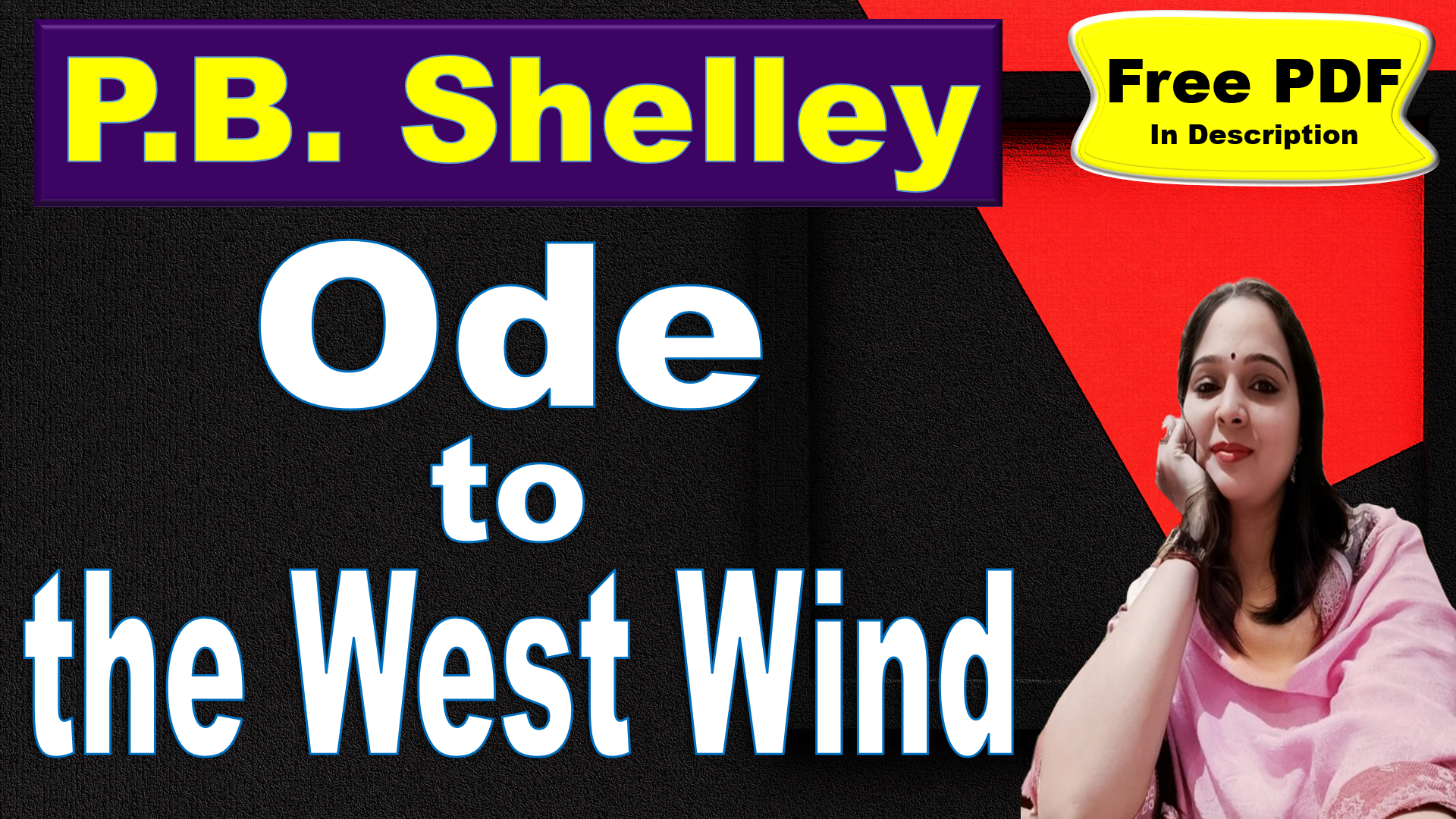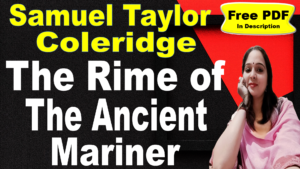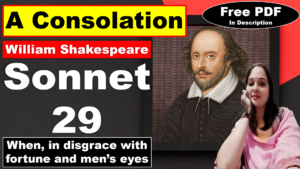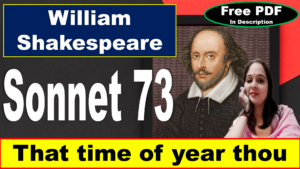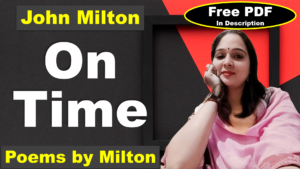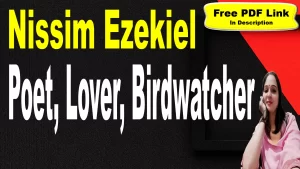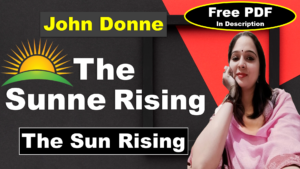Ode to the West Wind Questions Answers
Very Short Answer Questions
Q: Who wrote “Ode to the West Wind”?
A: Percy Bysshe Shelley.
Q: When was “Ode to the West Wind” first published?
A: 1820.
Q: In what poetic form is “Ode to the West Wind” written?
A: Terza rima.
Q: How many cantos (sections) are in the poem?
A: Five cantos.
Q: What season is associated with the West Wind in the poem?
A: Autumn.
Q: What does the West Wind symbolize in the poem?
A: Change and transformation.
Q: What natural elements does the West Wind affect in the poem?
A: Earth, sky, and sea.
Q: What does the poet wish to be like in the fourth canto?
A: A leaf, cloud, or wave.
Q: What does the poet compare himself to in the final canto?
A: A lyre played by the wind.
Q: What does the poet ask the West Wind to spread across the world?
A: His dead thoughts.
Q: What does the line “If Winter comes, can Spring be far behind?” suggest?
A: Hope and renewal after difficult times.
Q: What is the rhyme scheme used in “Ode to the West Wind”?
A: ABA BCB CDC DED EE.
Q: What does the poet refer to as the “trumpet of a prophecy”?
A: His words carried by the wind.
Q: What color is used to describe the moss in the Mediterranean in the third canto?
A: Azure (blue).
Q: What type of tone does the wind’s music have, according to the poet?
A: A deep, autumnal tone.
Q: What does the poet call the West Wind in the poem?
A: “Spirit fierce” and “Destroyer and preserver.”
Q: What does the poet want the West Wind to make him?
A: A lyre.
Q: What is the mood of the poem?
A: Passionate and reflective.
Q: How does the poet describe the leaves driven by the West Wind?
A: Like ghosts from an enchanter fleeing.
Q: Where does the poet imagine the “winged seeds” lying?
A: Cold and low, like corpses within graves.
Q: What does the poet ask the West Wind to scatter like sparks?
A: His words.
Q: What type of literary device is “O Wind”?
A: Apostrophe.
Q: Which famous Romantic poet wrote “Ode to the West Wind”?
A: Percy Bysshe Shelley.
Q: What natural event is symbolized by the “closing night” in the poem?
A: The end of the year or death.
Q: In which canto does the poet reflect on his lost youth?
A: Fourth canto.
Q: What does the West Wind drive over the universe?
A: Dead thoughts.
Q: How does the poet describe his thoughts in the final canto?
A: As withered leaves.
Q: What does the poet associate with the Mediterranean in the poem?
A: Summer dreams.
Q: What is the “solid atmosphere” in the poem filled with?
A: Black rain, fire, and hail.
Q: What kind of prophecy does the poet wish to deliver through the wind?
A: A prophecy of renewal and change.
Short Answer Questions
How does Shelley personify the West Wind in the poem?
Shelley personifies the West Wind as a powerful, almost divine force with the ability to act as both a “Destroyer and preserver.” The wind is portrayed as a “Spirit fierce,” capable of sweeping away dead leaves, stirring the ocean, and driving clouds across the sky. This personification gives the wind human-like qualities, allowing it to become a central figure in the poem, embodying change and transformation.
What is the significance of the West Wind’s role as both a destroyer and a preserver?
The West Wind’s dual role as both a destroyer and a preserver highlights the cyclical nature of life and nature. As a destroyer, it clears away the dead leaves and decaying matter, symbolizing the end of life or the passing of a season. However, as a preserver, it also scatters seeds, setting the stage for future growth and renewal. This duality reflects the interconnected processes of destruction and creation in the natural world.
Why does Shelley compare himself to a lyre in the final canto?
In the final canto, Shelley compares himself to a lyre, asking the West Wind to make him its instrument. Just as the wind creates music by blowing through the trees, Shelley wants the wind to channel its power through him, enabling him to express his thoughts and ideas. This metaphor reflects the poet’s desire to be inspired and to have his words carried across the world, influencing others much like the wind influences nature.
What is the significance of the poem’s closing line, “If Winter comes, can Spring be far behind?”
The closing line, “If Winter comes, can Spring be far behind?” symbolizes hope and renewal. It suggests that after the difficulties and hardships symbolized by winter, a time of renewal and rebirth, represented by spring, is inevitable. This line encapsulates the poem’s central theme that change, even when destructive, ultimately leads to new beginnings and positive transformation.
How does Shelley use imagery to convey the power of the West Wind?
Shelley uses vivid and dynamic imagery to convey the West Wind’s immense power. He describes the wind driving dead leaves like “ghosts from an enchanter fleeing,” stirring up the Mediterranean and the Atlantic, and scattering clouds like “the bright hair uplifted from the head of some fierce Maenad.” These images emphasize the wind’s ability to disrupt and transform the natural world, highlighting its role as a force of change.
How does the structure of the poem contribute to its overall impact?
The poem’s structure, written in terza rima with a rhyme scheme of ABA BCB CDC DED EE, creates a flowing, interconnected rhythm that mirrors the continuous motion of the West Wind. Each canto’s 14-line format, reminiscent of a sonnet, adds to the poem’s lyrical quality. This structure enhances the poem’s musicality and reflects the wind’s relentless energy, contributing to the poem’s overall impact.
What role does the theme of renewal play in the poem?
The theme of renewal is central to the poem, as the West Wind is portrayed as a force that not only destroys but also sets the stage for new life. The wind clears away dead leaves and scatters seeds, preparing the earth for the renewal that comes with spring. This theme reflects Shelley’s belief in the cyclical nature of life, where endings are always followed by new beginnings.
How does Shelley connect the natural world to his own personal experience in the poem?
Shelley connects the natural world to his own personal experience by expressing a deep desire to be as free and powerful as the elements influenced by the West Wind. He longs to be lifted like a leaf, cloud, or wave and to recapture the vitality of his youth. In the final canto, he asks the wind to channel its power through him, using him as an instrument to spread his thoughts and ideas, reflecting his yearning for personal renewal.
What does Shelley mean by “Drive my dead thoughts over the universe like wither’d leaves”?
In this line, Shelley is asking the West Wind to scatter his “dead thoughts”—ideas that may seem lifeless or stagnant—across the world, much like the wind scatters withered leaves. He hopes that by doing so, these thoughts can inspire new growth and creativity, leading to a “new birth.” This reflects the poem’s theme of renewal and the transformative power of nature.
How does the poem reflect the Romantic ideals of the time?
“Ode to the West Wind” reflects the Romantic ideals of the time by emphasizing the power of nature, the importance of individual emotion, and the potential for personal and societal transformation. Shelley’s deep connection to the natural world, his admiration for the wild, untamed forces of nature, and his belief in the cyclical nature of life all align with the Romantic emphasis on the sublime, the imaginative, and the revolutionary spirit.

